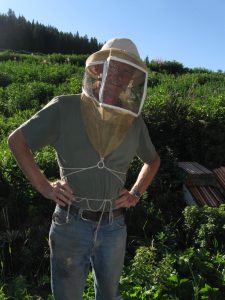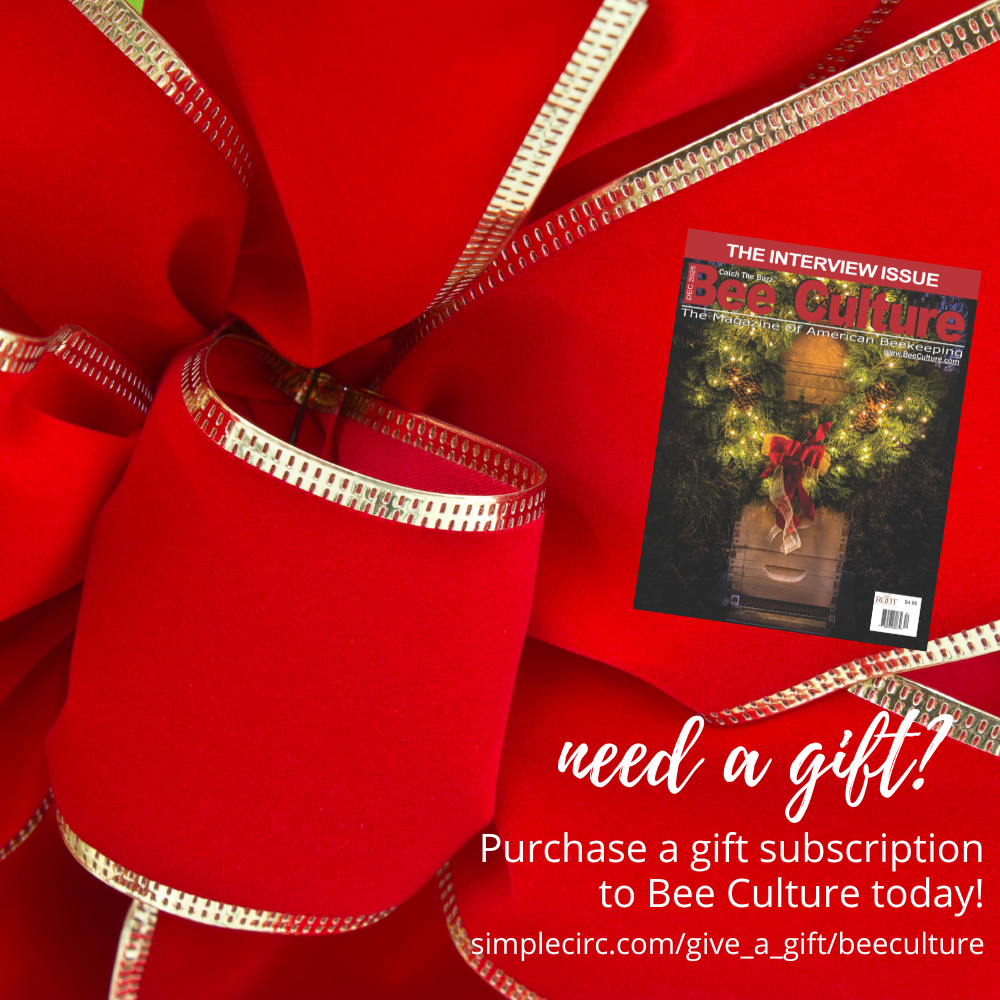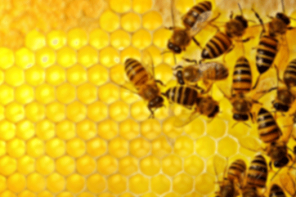
Ed Colby
Get On Board!
coloradobees1@gmail.com
By Ed Colby
Balance
Paul extracts honey for me, so I don’t have to get my fingers all sticky. Last September I took most of my 2017 honey in five-gallon buckets. But Tommy, who did the extracting, drew off about 1,300 pounds into two 55-gallon drums. I don’t remember why.
I left those two barrels in Paul’s honey house, thinking I’d deal with them later. Now it’s March, and the honey buckets stacked in our living room have largely disappeared. Things do get moved around in Paul’s honey house, so I thought I’d better at least locate those two barrels, before I really need them.
I looked in Paul’s new honey house, and I looked in the old honey house, and I couldn’t find my honey. Josh was mopping the floor in the bottling room when I found him. He had no idea where my honey was, so we talked about skiing.
The next day I called Paul’s right-hand-man Derrick in California. I wasn’t even thinking about those two drums when I picked up the phone. Derrick takes care of my bees in the almonds, and now it’s time to bring them home. I wanted a couple of pallets dropped off in Palisade, Colorado, for my sweet cherry pollination customers, and the rest sent to Paul’s holding yard in Rulison.
This year the almond blossoms froze, some of them, but Derrick said the bees in his care look “really good.” Derrick’s been feeding them syrup and pollen patties. He said some were still making delicious bitter almond honey.
There’s a lesson here. Did you catch it? Nothing cuts off a honey flow like a visit from Jack Frost. Yet despite significant freeze damage, Derrick’s bees look strong coming out of the almonds. Sometimes when Mother Nature cuts us short, pro-active bee husbandry can make up the difference.
I was about to hang up when I remembered the missing honey. “Oh, yeah,” Derrick said, “I remember those two drums with your name on them, but I thought you sold them to Paul. We sold those (wholesale) last Fall.”
Paul’s on a fishing trip, and I don’t want to bug him. He’ll be back, and we’ll figure something out.
Yesterday I skied Aspen Mountain with my chiropractor. Andi trades spinal adjustments and massage for Colby Farms lamb, beef, grape juice, honey, eggs – whatever we have. She administers her magic touch on me and my gal Marilyn both. I feel like Andi’s undercharging us, so I try to treat her right. She’s a very competent skier, but rock climbing, not skiing, is her thing. Andi’s not a physically imposing person. Her muscles don’t exactly ripple, but she climbs all the hard routes. When I asked how she manages to hang on like a spider on the wall, she said, “It’s all about balance, Ed.”
My bum knee felt pretty good on the ski hill yesterday. I’ve been getting a series of lubricating “rooster comb” injections in that knee. I don’t want it buckling under me when I’ve got a brood super in my hands in the beeyard. The shots are like getting the joints in my car greased, except I don’t have a grease zirc in my knee. I’ve gotten these injections before. They make me feel young again. Like youth itself, however, it’s only temporary.
A lot of people think my rooster-comb doctor was an astronaut once-upon-a-time, but what he really did was study the metabolic effect of space walking, especially astronaut overexertion and overheating in the primitive Gemini spacesuits. He’s a gentle soul who always asks about my bees.
Did you watch the Pyeongchang Olympics? Colorado skier Alice McKennis took fifth in the downhill. The little darling! Alice eats my honey. She grew up just down the road, and she’s one of the brightest stars on the World Cup circuit, when she’s not busted up. Her sister owns one of my beeyards, and when Alice’s cowboy brother-in-law stopped by the house to pick up the honey yard rent, he said, “Ed, we really appreciate the honey, especially Alice. She eats most of it.” Good. Now I have a racer to root for!
Last Spring a gentleman bought a couple of nucs from me. He e-mailed me today, asking if I would make more nucs for him, using foundation from “two-chamber Slovenian” hives that he would provide. I see a couple of problems here. One is that the Slovenian frames are taller and shorter than Langstroth, so they won’t fit in my Langstroth hives. The second is that nucs are made by pulling drawn comb – filled with eggs, brood, pollen and honey – from mature colonies, and then adding a new queen. So even if his Slovenian foundation frames did fit my Langstroth hives, they’d still have to get drawn out by the bees before they could get filled with bee food, eggs and brood. This could take forever.
Slovenian hives? This is like building a house right here in the United States but out of lumber cut to European metric specifications. I suppose you could do it, but why would you?
And he’s a relatively inexperienced beekeeper. Learning enough about bees to keep the little darlings alive is already a daunting task. I say keep it simple.
I like the guy. To succeed, you sometimes first have to fail. I’ll sell him some Langstroth nucs, if he wants them. But then he’s on his own.
Ed Colby practices beekeeping in Aspen Mountain, Colorado, where he lives with his partner, Marilyn.










